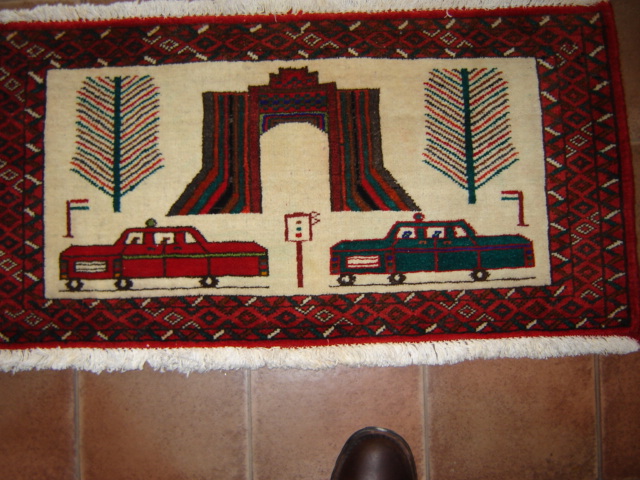A friend, and fellow rug collector, sent these interesting rug photos recently.
Rug 1
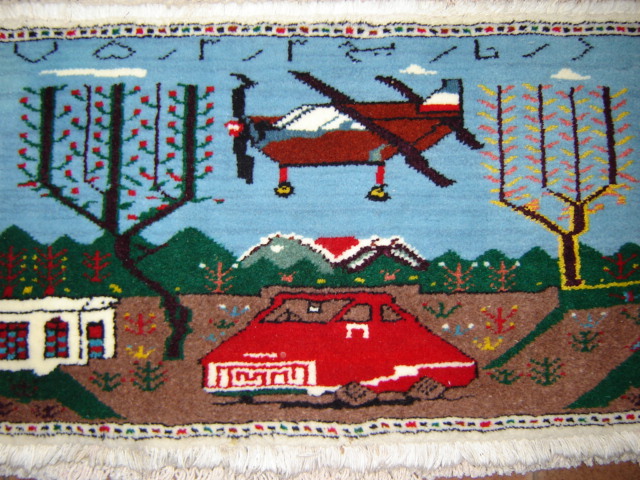
Rug 1 appears to be dated 3/3/57. February 1, 1979 corresponds to the 3rd day of the 3rd month of 1357, which coincidently is the day Khomeini returned from France. Secondly there is the French tri-color on the plane’s tail. The preceding word is hard to read but could be related to childbirth or the making of an epoch. Between the plane and the car appears to be a rising sun, an Iranian national symbol (usually shown in rugs rising over a lion’s back). This rug most likely, commemorates Khomeini’s return to Iran.
Rug 2

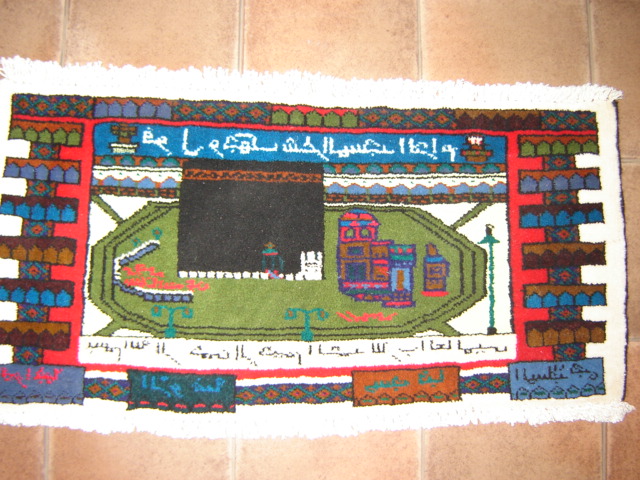
Rug 2 shows the Kabba in Saudi Arabia:

Notice the black rectangle, but also the smaller buildings around the black shroud are seen in both rug and drawing. The green shows the holiness of the site depicted. Also notice the minarets and arches in the top band of the rug. This rug probably commemorates someones hajj, or was woven to sell on the hajj. Iranians, and Afghans, often bring rugs on the hajj to sell to cover the expenses of the trip.
Rug 3
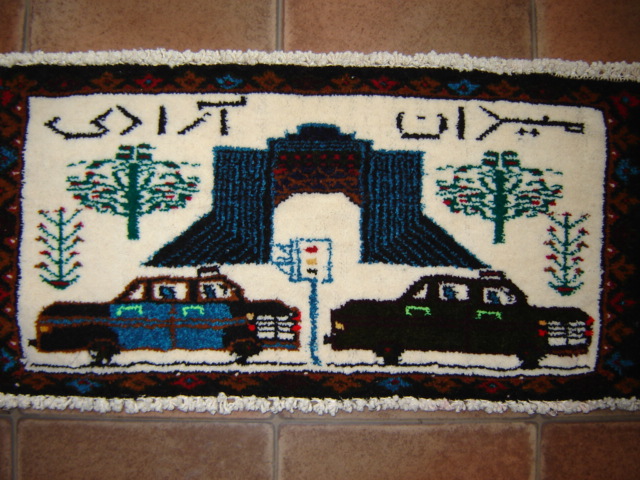
The text on the top of Rug 3, starting from the right, means square or open space, and the second word, azadi, is “freedom”. So one expects this is woven after 1979 when Khomeini changed the name of the arch the Shah built.
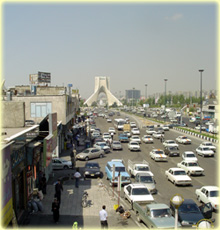
Rug 4
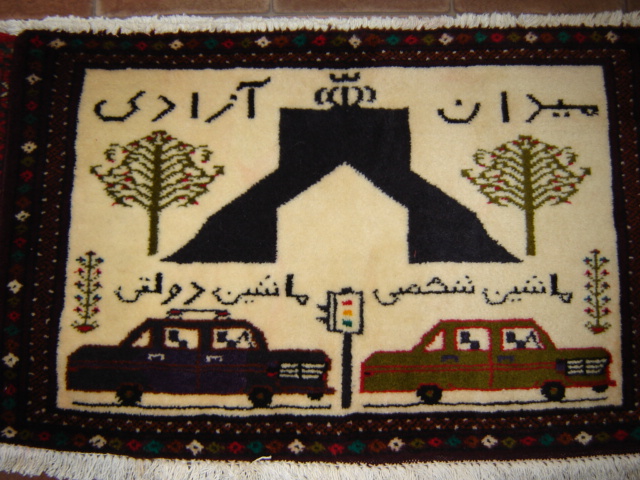
The same text is at top of rug 4. The second line says “maasheen” which surprisingly means motor or car, and the second word seems to be person or individual – the second character is hard to make out. The othere two words, to the left, are again ‘machine’ and probably something like government or state. So, indeed it is the government car following a personal car? It sounds like they could use some freedom in “Freedom Square”.
Rug 5
